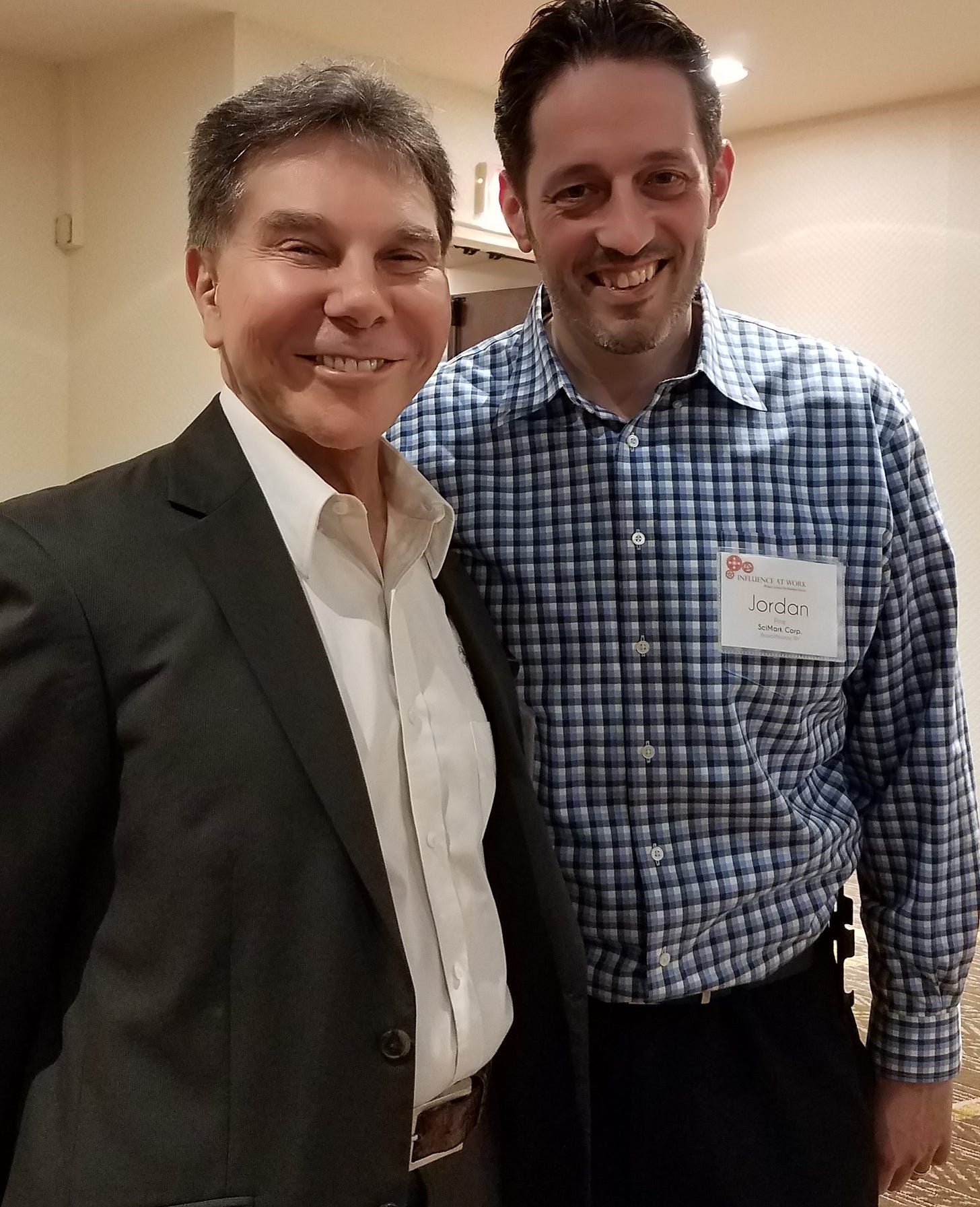The Seven Principles of Persuasion Every Marketer Should Know
Plus: Why your least-favorite testimonial might be your best testimonial
I’ve mentioned Robert Cialdini — whom I affectionately call ‘The Great Cialdini’ — several times in this newsletter. While he isn’t one of the ‘Masters of Marketing’ I normally write about, his work revealed why their tactics work. That’s because Dr. Cialdini literally wrote the book on how to persuade people.
First published in 1984, Influence: The Psychology of Persuasion broke new ground in the field of social psychology by uncovering the science behind classic selling techniques. Dr. Cialdini went ‘undercover’ for three years to study car dealerships, telemarketers and door-to-door salesmen. In doing so, he identified the six “principles of persuasion” he saw at work again and again.
The Principles of Persuasion
Reciprocity. If you do something for someone, they will feel obliged to return the favor.
Scarcity. The less there is of something, the more valuable it appears and the more people want it.
Authority. People will tend to believe and follow the advice of experts or authoritative figures.
Consistency. Once people commit to something, they will want to act consistently with that commitment.
Liking. People are more likely to be influenced by people they like or find attractive.
Consensus. People rely on other people’s behavior to guide their own, especially when uncertain about the correct course of action. (Also known as “social proof.”)
The fun video below explains and illustrates each of these principles.
In 2016 Dr. Cialdini published a new book titled, Pre-Suasion: A Revolutionary Way to Influence and Persuade, and introduced a seventh principle he calls “unity.” He writes:
The experience of unity is not about simple similarities…It’s about shared identities. It’s about categories that individuals use to define themselves and their groups, such as race, ethnicity, nationality, and family, as well as political and religious affiliations. A key characteristic of these categories is that their members tend to feel at one with, merged with, the others. They are the categories in which the conduct of one member influences the self-esteem of other members. Put simply, we is the shared me.
“We is the shared me” is a powerful insight into human nature of which every marketer should be aware. In fact, not being aware of it can lead to some pretty big marketing blunders. Just ask the team at Bud Light, which is no longer the #1 beer in America thanks to a perceived breach of the unity principle.
While Influence and Pre-Suasion are Dr. Cialdini’s best-known books, Yes! 60 Secrets from the Science of Persuasion is my favorite. That’s because it’s a treasure trove of useful examples and case studies. Below is just one example of what this great book has to offer.
Maximizing the Bandwagon Effect
I mentioned the “bandwagon effect” in my breakdown of the nation's #1 DRTV commercial. It’s a well-known cognitive bias that Wikipedia describes as “the tendency for people to adopt certain behaviors, styles, or attitudes simply because others are doing so.” Direct marketers typically tap into this effect by using statistics (e.g. “X million sold”) and testimonials.
Bandwagon messaging works because it employs the sixth principle of persuasion: consensus/social proof. As explained above, people rely on other people’s behavior to guide their own — and this includes deciding whether to buy something. In Yes!, Dr. Cialdini and his team go further and share some case studies that identified a way to shift this effect “into another gear.” They show that the more relatable the people on the bandwagon are, the more powerful its effect will be.
Focusing on testimonials specifically, they write:
The results [of our research]…suggest that the more similar the person giving the testimonial is to the new target audience, the more persuasive the message becomes. This means that in deciding which testimonials to show a prospect, you need to take your ego out of the process. You should begin not with the one you’re most proud of, but with the one whose circumstances are closest to those of your audience.
I don’t know about you, but that last line gave me pause. I’ve seen it in so many marketing meetings. A group of non-representative executives sit around a conference room table deciding what should be in a commercial meant to appeal to consumers that share little in common with them. I’ve been smart enough to think about this when deciding what product categories to pursue or whether something is a common problem. However, I haven’t thought much about how this impacts subtler decisions we make, such as what testimonials prospects will find most appealing. Food for thought.
Chart Watch👁️
It’s Media Week 30, which means more than half the year is already gone! Since it’s the summer doldrums and there’s no campaign in the DRMetrix Top 50 I haven’t covered yet, let’s take a moment to note the top campaigns for each of the major marketers.
IdeaVillage - MicroTouch Titanium Head Shaver (now in the #1 spot)
Top Dog - BeActive Plus (#2 this week)
BulbHead - Pocket Hose Copper Bullet
Emson - My Foldaway Fan (Bullseye Pro is nearby at #7)
Ontel - Arctic Air Pure Chill
Allstar - Blade Maid
It’s also worth mentioning that Mission Instant Cooling Gear is in the Top 10, Inscents Waterfall is in the Top 20 and the Contour Swan Pillow is in the Top 25.
For Premium Subscribers🔒
Past this point, it’s paying subscribers only. Dozens of savvy marketers just like you have already signed up. Isn’t it time you joined them? 😉





